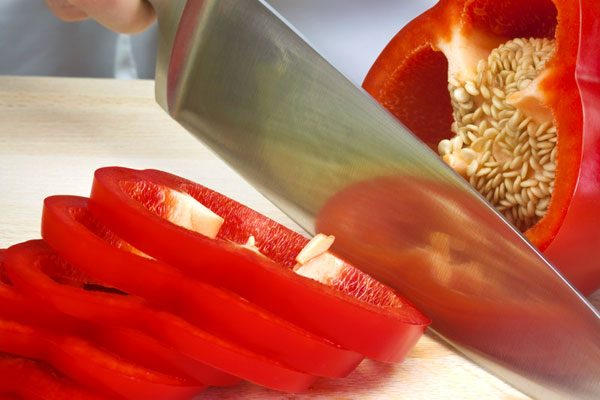When you learn to cook in a cooking class or a culinary school, the first cookings lessons are almost always about how to recognize and learn to use the various knives and utensils for cooking. Regarding knives, there are from different sizes with short or long blades, wide or narrow, hard or flexible… Each kitchen knife has a specific main use.
Learning how to use kitchen knives is very important if you want to be efficient and fast in a kitchen. You also have to know how to maintain and sharpen your knife set. Basic knife skills allow you to save time, do quality work and limit the risks of wounds.
With a bit of training and a good cutting board, it is possible to do a lot of things with the basic knifes.
The paring knife

Paring knife
The paring knife is useful to peel vegetables and legumes that you don’t peel with a normal peeler. You also use it to cut and trim vegetables. It is a very versatile knife because of its small size and handiness; you can make accurate cuts or take out nerves from meat.
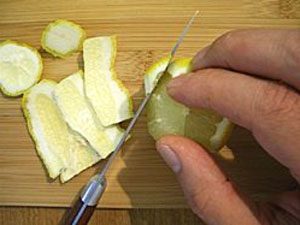
Peeling a lemon with a paring knife
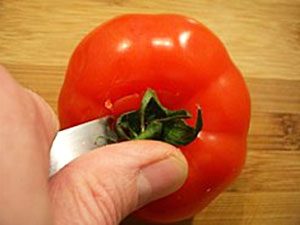
Removing a tomato stalk with a paring knife
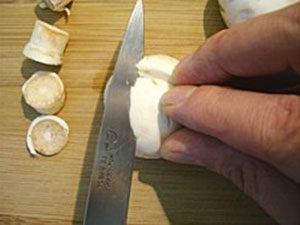
Slicing mushrooms using a paring knife
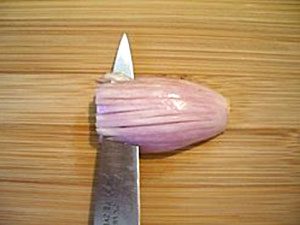
Using a paring knife to slice shallots
You will also use it to:
- Peel a lemon
- Remove the stalk of a tomato
- Slice mushrooms
- Slice shallots
- Seed peppers
- Carve vegetables for decoration purposes
The fillet knife
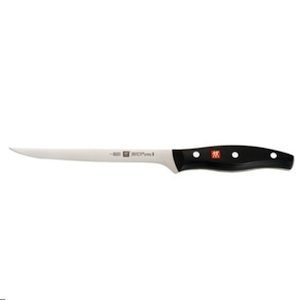
Flexible blade fillet knife
The fillet knife has a long, thin and flexible blade which is mainly used to raise small or medium-sized fish fillets. You can also use it to finely mince onions or shallots. It is also useful to make delicate cuts. The flexible blade allows a clean and accurate cut, thus limiting waste when filleting fish or scallops.
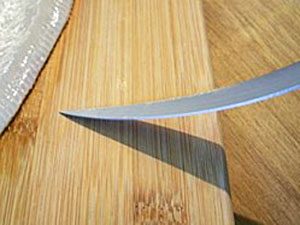
The flexible blade of a fillet knife
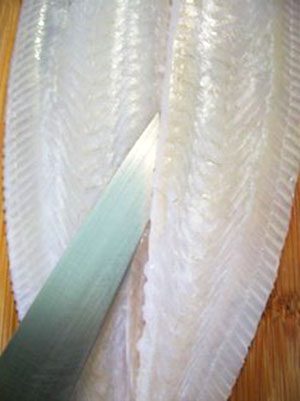
Filleting a flat fish with a fillet knife
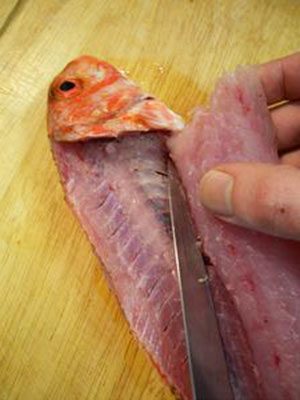
Using a fillet knife to fillet a round fish
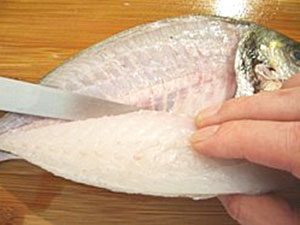
Filleting a small bream ( flat fish with 2 fillets )
With a fillet knife you can also:
- Raise a 4 fillets flat fish (eg. a sole fish)
- Fillet a round fish like a red mullet
- Raise a 2 fillets flat fish like a sea bream
- Cut thin slices of eggplant
- Cut orange or citrus supremes
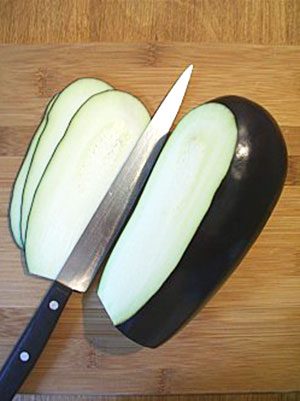
Slicing eggplant with a fillet knife
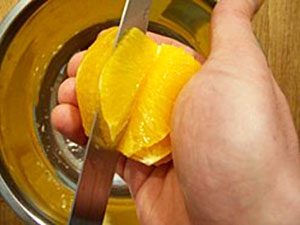
Cutting orange supremes with a fillet knife
See more fillet knives on amazon
The chef knife
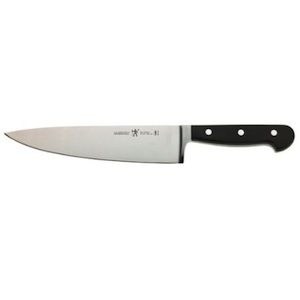
Stainless-Steel Chef’s Knife
The chef’s knife is the kitchen knife we use to mince and cut vegetables. Its blade is medium to long and can be more or less stiff. The chef’s knife is useful for certain preliminary preparation of meats, poultry or fish.
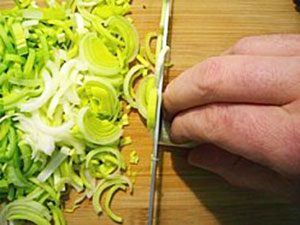
Mincing leeks with a chef’s knife
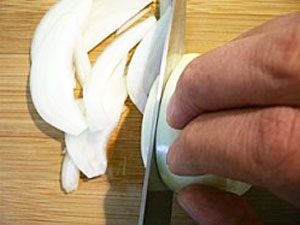
Mincing an onion using a chef’s knife
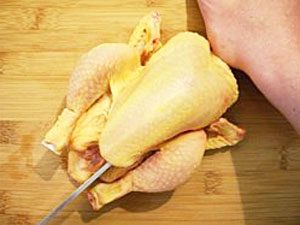
Cutting a chicken with a chef’s knife
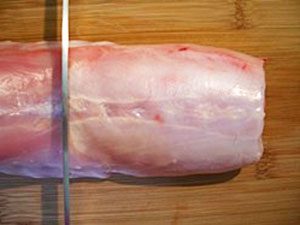
Cutting a rabbit with a chef’s knife
You’ll use the chef’s knife to:
- Mince leeks
- Mince onion
- Remove chicken’s spinal bone
- Cut a raw rabbit or poultry
The boning knife
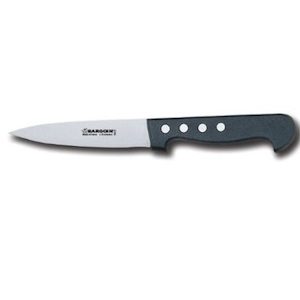
Stainless steel boning knife
As its name suggests, the boning knife is used to bone pieces of meat or cut raw poultry. The blade is short and very stiff.
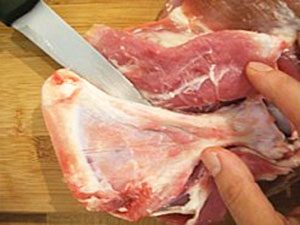
Using a boning knife to prepare a lamb shoulder
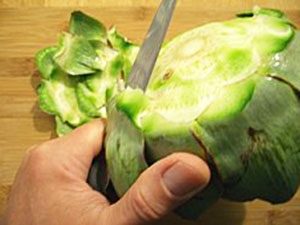
Cutting artichoke with a boning knife
You’ll need the boning knife to:
- Bone a lamb shoulder
- Bone a lamb spine
- Cut a raw rabbit
- Carve or trim various vegetables like artichokes
Vegetable peelers
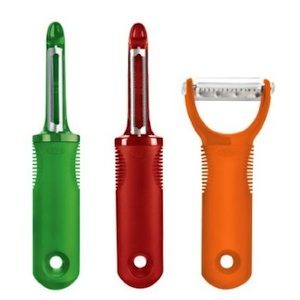
Vegetable peeler set
Vegetable peelers exist in different shapes. They are are all used to peel vegetables.
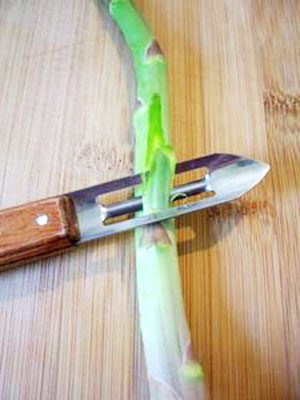
Peeling asparagus with a vegetable peeler
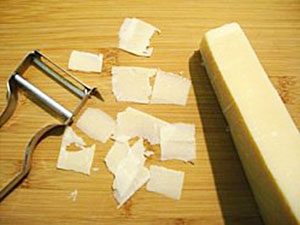
Using a vegetable peeler to grate or make thin slices of cheese
You can use a vegetable peeler to:
- Peel carrots and potato skin
- Peel asparagus
- Make thin slices of parmesan
If you have all of these, you will be set with the basic knives you should need in your kitchen. Please add your favorite knife and tell us what you use it for in the comments below.

